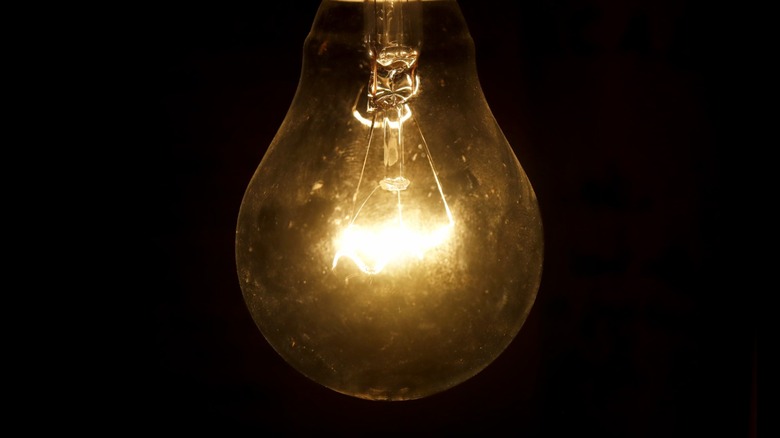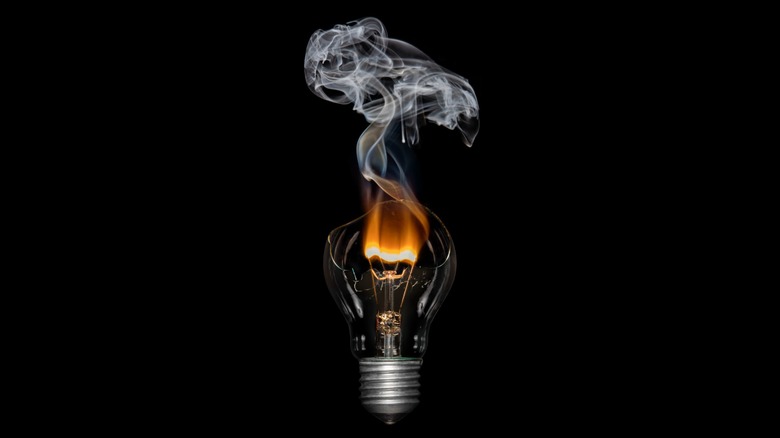How Long Is It Safe To Leave A Light Bulb On?
Around 7 a.m. on November 9, 2016, in Lackawanna, New York, employees of Industrial Materials Recycling discovered thick smoke during their routine daily safety inspection. It was coming from the old Bethlehem Steel site, and it wasn't long before they discovered that the site had caught fire. The fire fed on stacks of cardboard and, within hours, a black plume that was visible for miles towered over the city. Firefighters came in for what would become a 10-day battle, while hundreds of nearby residents were forced to evacuate their homes.
When asked what caused this fire, officials agreed that it was a light bulb. The belief is that a hot bulb fell onto the cardboard that fueled the fire, kicking off the inferno. Incandescent and halogen bulbs can run dangerously hot, with halogen bulbs generating more heat than any other bulb type. To prevent fire, experts recommend maintaining at least 4 to 6 inches of clearance around them to avoid overheating. Leaving these bulbs burning for extended periods (e.g., 4 to 8 hours), particularly in enclosed fixtures or near flammable materials, can pose a serious fire hazard.
The light bulbs in many homes today are the relatively safe LED types and almost certainly not what caused the fire in Lackawanna. LEDs run cool and can be very efficient, making them safe to leave on overnight or even run for days without much risk. Compact fluorescents (CFLs) are also generally safe for long stretches, though they wear out faster if constantly switched on and off.
Why are incandescent bulbs and halogen bulbs such a fire hazard?
Incandescent and halogen bulbs both produce light by heating a filament until it glows, a process that wastes enormous amounts of energy as heat. In fact, an incandescent bulb converts less than 10% of its power into visible light, with the rest radiating as thermal energy. That's why these bulbs feel so scorching to the touch after only a short time. Place one in a desk lamp pressed against a paper shade, or let it sit in an enclosed fixture with poor airflow, and the temperature can build quickly enough to ignite nearby materials. This inefficiency and safety hazard is why the U.S. government has banned incandescent bulbs.
Halogen bulbs take the same principle and push it further. They burn hotter and brighter than standard incandescents, reaching surface temperatures of several hundred degrees Fahrenheit. The Consumer Product Safety Commission has even issued warnings about halogen torchiere lamps igniting curtains or bedding when placed too close to them. With such high heat output, leaving halogen bulbs on for long stretches without ventilation is asking for trouble.
The risk isn't just fire, either. Prolonged heat exposure from these bulbs can damage sockets, wiring, or the fixture itself, creating hidden electrical hazards or even electrical fires. That's why experts strongly advise using them only in well-ventilated fixtures and never near flammable objects. With so many types of efficient LED bulbs that pose little to no risk, you should use those in sensitive environments where bulbs need to work longer.

